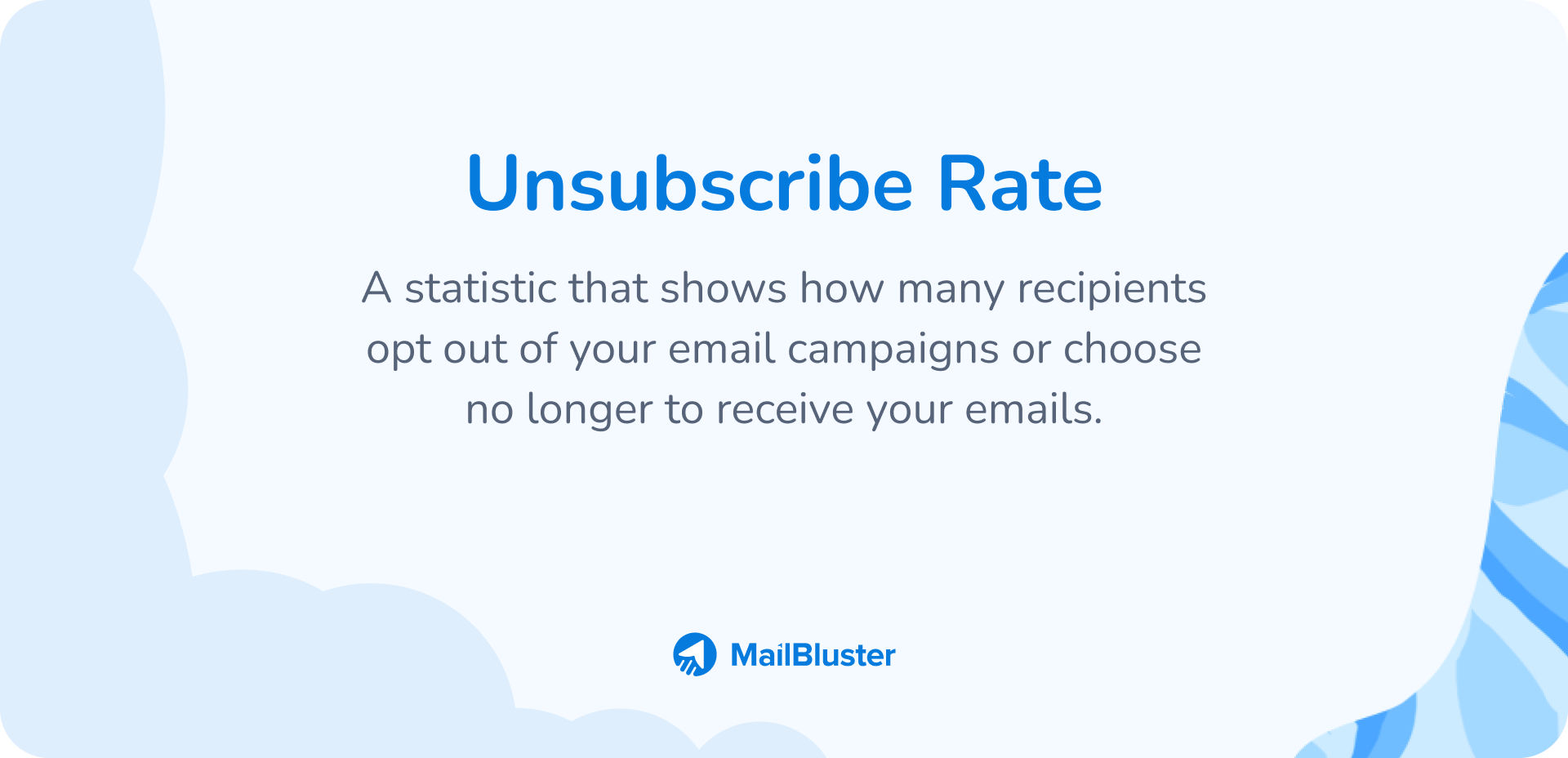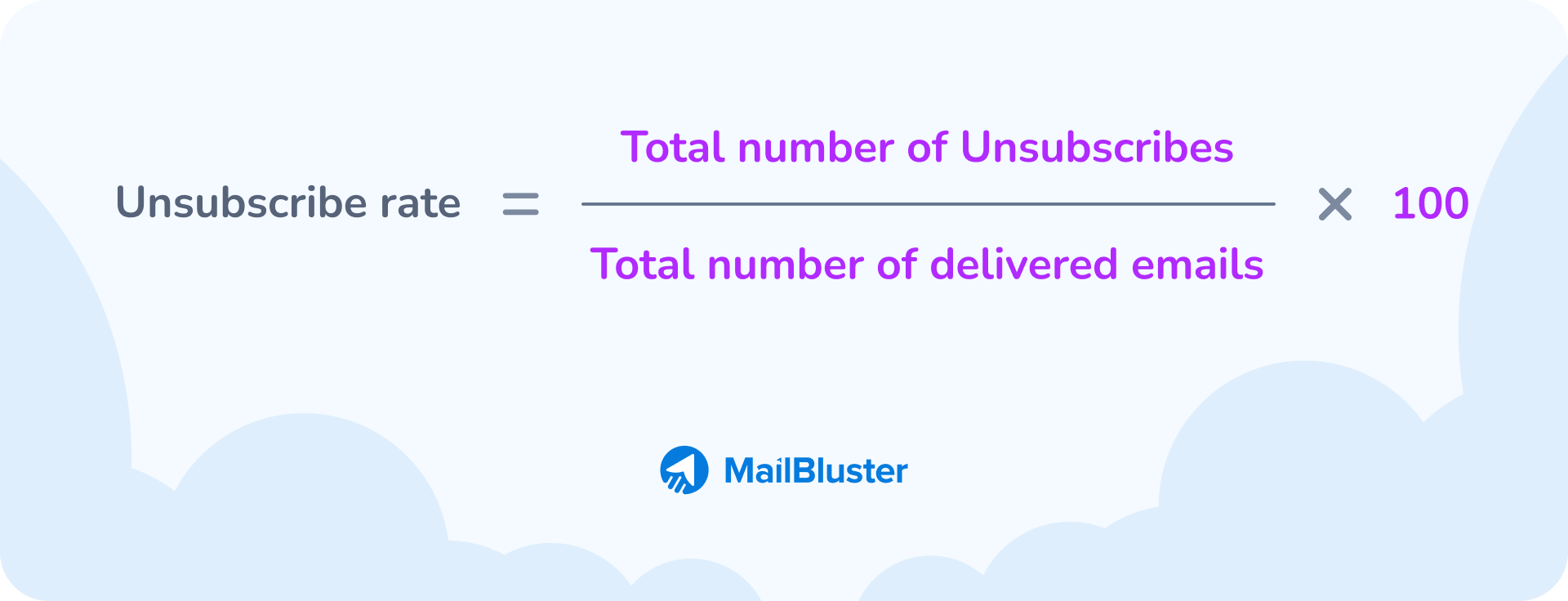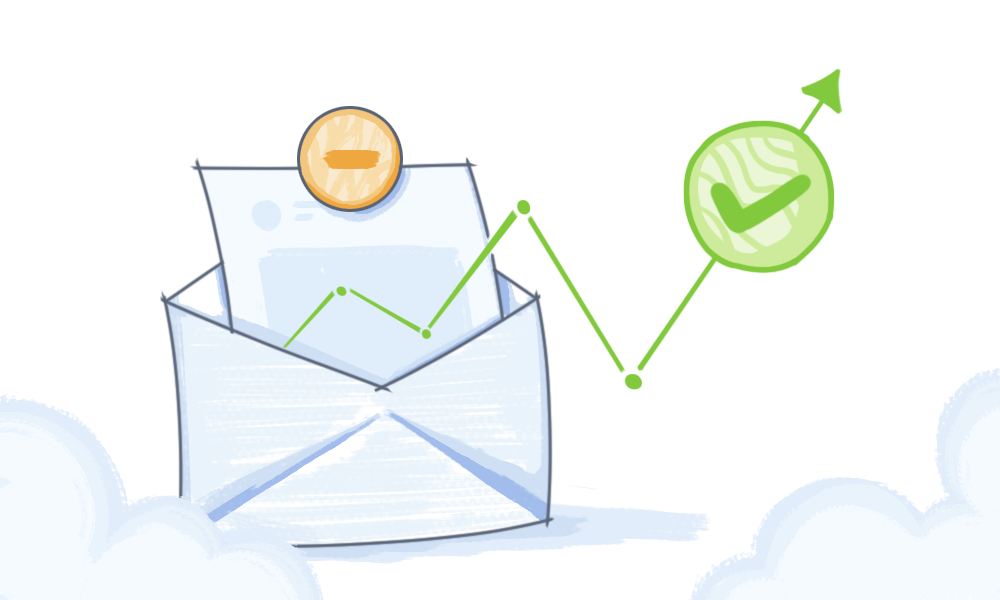Unsubscribe rate reflects the effectiveness of your email campaigns. Therefore, keeping it in check is quite necessary in the email marketing platform. Adding an unsubscribe link in email is a must, and you need to be concerned about keeping the unsubscribe rate to a minimum level.
In this blog, I will discuss the unsubscribe rate in detail and describe how to maintain it healthily.
Table of contents
- What is Unsubscribe Rate?
- Unsubscribe Rate Formula
- Average Rate
- What is Considered a Good Unsubscribe Rate?
- How to Reduce Unsubscribe Rate and Maintain it Healthily
- Wrap Up
What is Unsubscribe Rate?
The unsubscribe rate is a statistic that shows how many recipients opt out of your email campaigns or choose no longer to receive your emails.

Though adding an unsubscribe link to email is mandated by law, it benefits the marketer, too. You will get to know how you’re doing in your email marketing by seeing the unsubscribe rate. If the rate is average, then you’re doing good. If it’s lower than the average, then you’re doing great. But if it’s higher than the average, then that means your email marketing campaigns need improvements.
Unsubscribe Rate Formula
Let’s learn the email unsubscribe rate formula, which is a part of the email marketing success measure.

Unsubscribe rate = Total number of Unsubscribes / total number of delivered emails x 100
Suppose you have sent 6000 emails and 6 of your subscribers unsubscribed from your email list, then the unsubscribe rate is 0.1%.
Average Rate
The average unsubscribe rate mainly varies from industry to industry. Most marketing experts say the average unsubscribe rate stands between 0.2% and 0.5%. Statista states that the unsubscribe rate is 0.1% globally and 0.12% in the UK.
What is Considered a Good Unsubscribe Rate?
An unsubscribe rate of 0.2% or below is excellent. If the rate stands between 0.17% and 0.2%, then your email list is mostly full of interested subscribers. If you can keep it lower than 0.5%, then you’re doing good. But something is amiss if it’s higher than that, leaving the subscribers unsatisfied somehow.
Moreover, you don’t need to be concerned about a newly generated email list. Because it takes time for the new subscribers/audiences to decide if they want to engage with your business or not.
How to Reduce Unsubscribe Rate and Maintain it Healthily
In order to maintain a healthy unsubscribe rate, you need to be concerned about reducing it. Let’s learn some essential tips that are a must for you to follow to reduce the unsubscribe rate.
Clean your email list regularly
Regularly clean your email list based on unsubscribed users and additions of new ones. Also, update or fix any existing email addresses. It will enable you to send emails to only interested recipients and safeguard the reputation of your domain.
Don’t use purchased email list
Don’t use purchased email lists because people who are on the purchased email list don’t know you. And they won’t be willing to hear from random businesses. So they’ll unsubscribe from your email list. Hence, it will increase your unsubscribe rate, affecting your email deliverability and open rates. Therefore, avoid using any purchased email list. Actually, don’t buy email lists ever; even better! Because buying an email list doesn’t benefit email marketing.
Maintain email frequency
Maintain email frequency because there’s a good chance that your subscribers will unsubscribe if they don’t hear from you often. Don’t oversend emails or interact less. Set a suitable email frequency/email cadence and maintain it properly. For instance, make sure to engage with your subscribers at least twice or thrice a month.
Segment your email list
Segment your email list and send emails to the targeted segments accordingly. Do it based on age, location, gender, buyers’ preferences, etc., and send relevant emails based on those segments. For instance, it is preferable to inform users who are readers and interested in books about the release of a new book. If you send book updates to the nonreaders, then they will likely unsubscribe. So, segment your email list and send relevant emails. You’ll receive more subscribers and fewer unsubscribes if you do this.
Personalize your emails
In email marketing, you must segment users and target them with personalized/customized emails. You need to send relevant emails to the users for a strong engagement. Segmented and personalized emails help produce 58% of the business’s revenue. Users interact more and increase their trust when you send targeted emails with good, relevant content. Such trust and engagement aid in lowering unsubscribe rates.
Don’t send too many emails
Don’t send too many emails because if you oversend emails, your subscribers will hit the “opt out link/unsubscribe link” due to the irritation of seeing your excessive amount of unnecessary emails. So, limit the number of emails you send. Too much of something is likely to carry negative effects; just like the proverb goes, “Too much of anything is good for nothing.”
Don’t send unsolicited promotional emails
To engage in email marketing, you must have permission to send emails. Most people will unsubscribe or flag an email as spam if you send promotional emails without their consent.
Verify and get a blue checkmark for your business email
Verify your business email and get a blue checkmark to ensure your authenticity. People tend to unsubscribe if they doubt your identity. In 2024, about 30.1% of internet users expressed concern about businesses misusing their personal or private data. Users are conscious of the value of their data and the need to safeguard it against unauthorized usage. This specificity demonstrates the value of a blue checkmark in protecting and confirming the sender’s authentic identity. If you get a blue checkmark for your business email, it will definitely aid in maintaining a healthy unsubscribe rate.
Make it mobile-friendly
81% of consumers prefer to read emails on their tablets or smartphones. So, you must ensure your emails are compatible with mobile devices. If your emails are not mobile-friendly, then your subscribers who read emails on mobile devices like smartphones and tablets will likely unsubscribe. Your subscribers will be happy if your emails are designed clearly and suited for Smartphones and tablets. So, make your email mobile-optimized to maintain a good email unsubscribe rate.
Last but not least, you need to focus on improving your emails’ written copy.
Make your email content interesting and engaging
Try to make interesting content so the users won’t get bored but rather find it engaging. Write emails based on users’ preferences, make them relevant, and try to make them trendy to ensure high interest. Doing so surely helps in boosting user engagement and reducing email unsubscribe rate.
Make catchy email subject lines
A compelling and catchy email subject line may increase the likelihood of the receiver opening the email and help to reduce the unsubscribe rate. 47% of email receivers decide whether or not to open an email based on the subject line. Furthermore, 33% of email recipients read emails because of catchy subject lines.
Keep your email content to the point
You need to focus on the email content’s length. Don’t beat around the bush and make it too long. Write it to the point; keep it short and sweet. Otherwise, the recipients will find it monotonous enough to hit the unsubscribe button/unsubscribe URL.
Wrap Up
Now, you understand the significance of keeping a healthy unsubscribe rate and how to reduce it. Hopefully, you’ll follow and implement these best practices in your next email campaigns.
Click below to learn how to add an unsubscribe link to an email with our MailBluster



 Contents
Contents
